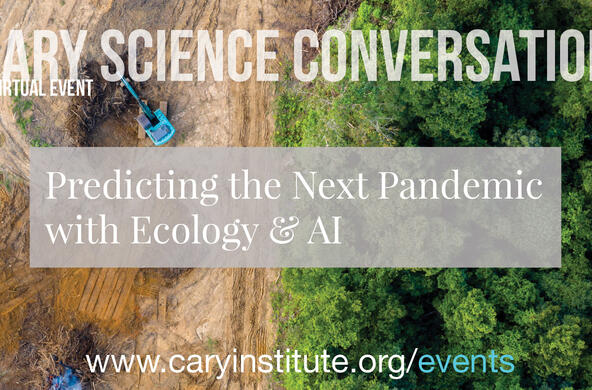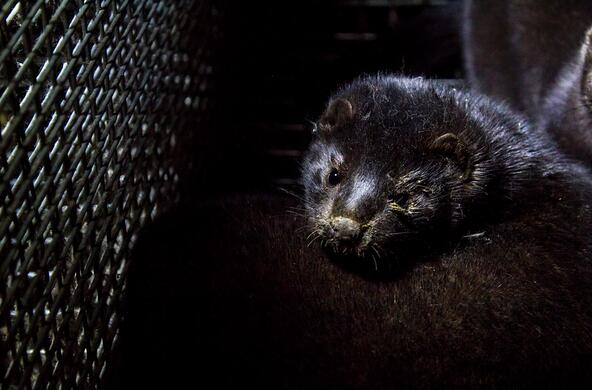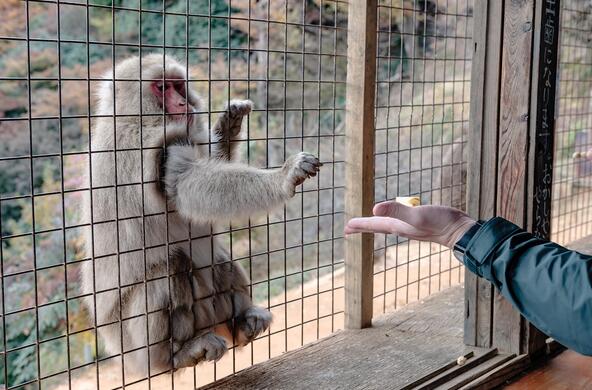As a veterinary microbiologist at Colorado State University, Anna Fagre is used to studying viruses in animals. Usually her job is to find rogue pathogens in wildlife before they infect humans. But over the last six months, Fagre and scientists like her have been consumed by the opposite problem: stopping humans from passing a deadly virus on to animals.
Fagre and her colleagues are studying how easy it is for animals – cats, dogs, hamsters and mice – to catch Covid-19 from a human. The virus that causes Covid-19, Sars-CoV-2 is so common that scientists are increasingly worried about it leaping from humans back into animals, and spreading unchecked in the wild. If that happens, it could usher in a new phase of the pandemic with deadly consequences for humans and animals.
The threat is very real. Diseases much less ubiquitous than Covid-19 have spilled over from humans to wildlife in recent years. Ebola jumped from humans to great apes in the early 2000s with devastating consequences, the H1N1 influenza infected seals and sea lions between 2009 and 2011, while other respiratory viruses have gone on to wreak havoc on mountain gorillas over the past decade, an already endangered population.
If Sars-CoV-2 did get into a new animal population, it could perpetuate the pandemic indefinitely, with the virus moving intermittently back and forth between its new host and humans. Ominous warnings can be found in the cases of yellow fever, Ebola, chikungunya and tuberculosis, diseases that were once brought under control before spilling back into animals which enabled them to persist, adapt, and then reinfect people.
“There are two reasons we’re concerned about spillback: the conservation and the public health components,” says Fagre. “If this virus spills over into a species which is already hugely threatened by things like climate change, habitat loss, and other stressors, what kind of conservation impact does that have? And we’ve seen in the past that it’s much more difficult to eradicate a pathogen when it has a wildlife reservoir.”
One of the biggest concerns is that Sars-CoV-2 transmission among animals could encourage the virus to mutate further, potentially leading to the rise of dangerous new variants, ones which might be more virulent, or capable of evading the protection offered by our current vaccines.
We’ve already had a hint of what can happen when humans infect animals with Sars-Cov-2. Between March 2020, and January 2021, the virus was detected in 400 mink farms across eight countries in the EU. According to the European Centre for Disease Protection and Control (ECDC), in November 2020, the animals transmitted a new variant of Sars-CoV-2 back to farm workers in Denmark.
This news saw the ECDC compile a further report recommending that all mink farms conduct active testing of animals and staff to prevent further outbreaks. Both the Netherlands and Denmark responded by culling all their farmed mink, some several million animals, with the Netherlands closing down its entire mink farm industry.
Over the past month, a series of new experiments in the labs of Colorado State University have demonstrated how quickly Sars-CoV-2 can mutate in a new species. When Fagre’s colleagues infected cats and dogs with the virus, they found that its spike protein had already mutated by the time it had been passed between three different animals. When Fagre herself conducted a similar experiment with deer mice, she saw mutations within just two transmissions. “Almost all of the virus population was acquiring that new mutation within just a few transmission cycles,” she says. “These coronaviruses are very good at cross-species transmission. We saw it before with Sars and Mers, and now Sars-CoV-2.” If such mutations were to occur under non-controlled conditions in the wild, the consequences for both animals and humans could be disastrous.
This means we somehow need to mitigate the threat posed by spillback. The problem is complex, and while scientists tend to unanimously agree that governments need to devote more resources towards managing this particular risk, views differ when it comes to the precise strategy required. According to Michael Osterholm, an epidemiologist at the University of Minnesota, we should focus on monitoring Covid-19 infections in domesticated animals and household pets, as these creatures are in constant contact with humans, and so the likelihood of two-way transmissions occurring is far higher.
“At this point, I think those are the animal species that are of the greatest concern,” he says. “The potential for contact, and changes in the virus, which would then be passed back to humans, is higher.”
In the US, government organisations have already launched initiatives which are attempting to tackle this. The United States Department of Agriculture’s Animal, Plant and Health Inspection Service (APHIS) is conducting surveillance efforts of both domestic animals and wildlife. The agency is closely monitoring farmed mink and other species that live in close proximity to humans. This includes fox squirrels, raccoons, deer mice, white-tailed deer, and rabbits, some of which have already displayed the ability to spread the virus within their species in laboratory settings.
Since the beginning of the pandemic, a number of research teams around the world have been surveying domestic animals such as cats, dogs, and hamsters to assess the prevalence of Covid-19. Virologist Kaitlin Sawatzki is working on one such project at Tufts University in Massachusetts. “So far, we’ve tested 2,455 different animals since March 2020,” she says.
Roughly five per cent of Sawatzki’s animals tested positive for Covid-19 – a figure that she says is comparable to findings from elsewhere in the world. However, while this work is important, she believes that monitoring wild animal populations is far more important in terms of preventing problematic spillback events, pointing out that if pets or farm animals become infected, it is relatively straightforward to prevent ongoing transmission of a mutated virus.
“I'm not terribly worried about pets causing an ongoing pandemic, because they tend to stay in the home,” she says. “My bigger concern is that if Sars-CoV-2 is able to spill over into wildlife, and then continue with onward transmission within that species, then that's something that we can't control in the same way as your household dogs.”
As a result, Sawatzki is leading a separate initiative, working with 22 wildlife rehabilitation facilities across the US, which take in injured animals, and then release them back into the wild. So far they have screened 673 wild animals, to see whether workers at the facilities have infected them with Covid-19. “All have been negative so far, but if we do find any positive tests, we would immediately report them to state and federal officials,” she says.
Finding wild animals most at risk of contracting Covid-19 and passing variants of it back onto humans may sound like a hunt for a proverbial needle in a haystack, but sophisticated artificial intelligence tools are already providing scientists like Fagre and Sawatzki with some vital assistance. Earlier this year Barbara Han, a disease ecologist at New York’s Cary Institute of Ecosystem Studies, created a computer model which predicted the likelihood that different species can harbour Sars-CoV-2, and transmit it effectively between them. While ACE2 – the receptor which the virus uses to get into our cells – is found throughout the animal kingdom, it binds to this receptor more strongly in some animals than others.
“For the host to be infected and then capable of transmitting it, the virus has to get into the cell, replicate, and then all the new viruses leave the cell,” Han says. “But none of these things will happen unless there’s a strong bond, which depends on the structure of ACE2, which varies from one species to the next. So we created this model where we computed how strong a bond we expected to be produced, depending on what ACE2 looks like in all these different species. This allowed us to predict whether they are likely to produce an infection which could ultimately be consequential to humans.”
Out of 299 vertebrates, Han and her colleagues identified a number of creatures that appear to be particularly susceptible to becoming infected with Sars-CoV-2 and then transmitting it. This list included mink, raccoon dogs, tree shrews and creatures which often live in relatively close contact to humans such as deer mice and red foxes. Han says that the United States Geological Survey is now conducting a surveillance program, sampling and testing animals which rank highly in terms of susceptibility to Sars-CoV-2.
Han believes that artificial intelligence will only become more important when it comes to containing spillback and assigning risk to different animal populations. “This kind of computer modelling can really add value in terms of helping us get in front of the next spillover event,” she says. “In the future, there could even be ways to predict exactly how the virus is likely to evolve in animal populations, taking into account the molecular structure of their cells. That’s not quite there yet right now, but it’s possible.”






